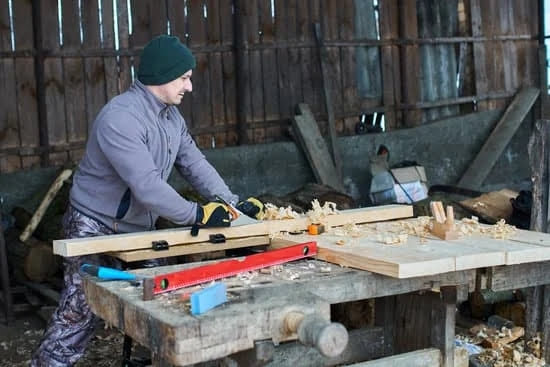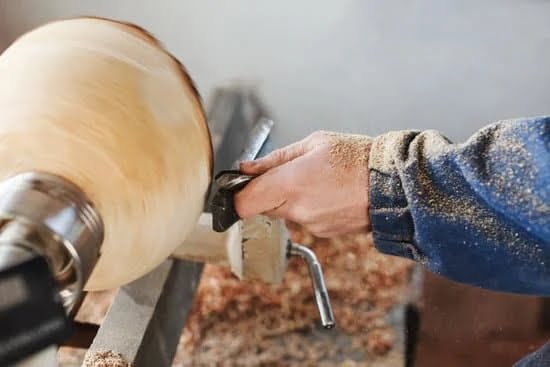Are you looking to expand your woodworking capabilities? One tool that can greatly enhance your productivity and precision is the multi router. In this article, we will provide a comprehensive guide on how to set up and utilize this versatile machine for a wide range of woodworking projects.
The multi router is a unique tool that stands out from other woodworking equipment due to its ability to perform multiple functions in one compact machine. It combines the capabilities of a router table, spindle moulder, and hand-held router, making it an indispensable addition to any woodshop. Its versatility and efficiency make it ideal for creating intricate joinery, shaping wood, and producing complex profiles with ease.
To fully understand the multi router’s potential, it’s important to familiarize yourself with its components and their functions. We will walk you through each part in detail, from the main frame to the cutting head, so you can gain a comprehensive understanding of how this machine operates.
In the following sections, we will delve into the safety considerations when operating the multi router and provide step-by-step instructions on setting it up for use. Additionally, we will cover how to select the right router bits for different woodworking tasks and explore basic and advanced techniques for using the multi router effectively.
Whether you are new to woodworking or an experienced craftsman, this article will equip you with the knowledge needed to harness the full potential of the multi router.
Understanding the Components of the Multi Router
The multi router is a versatile woodworking tool that consists of several key components, each with its own specific function. Understanding these parts is essential for proper operation and maintenance of the machine. Below is a detailed breakdown of the components and their functions:
1. Base: The base of the multi router provides stability and support for the entire machine. It is typically made of heavy-duty materials such as cast iron or steel to ensure durability and minimize vibration during operation.
2. Router Motor: This is the heart of the multi router, responsible for powering the cutting action by spinning the router bits at high speeds. It is important to select a motor with sufficient horsepower to handle various woodworking tasks.
3. Fence: The fence serves as a guide for controlling the direction of cuts performed with the multi router. It can be adjusted and locked into position to accommodate different angles and dimensions.
4. Spindle: The spindle holds the router bits in place and allows for vertical adjustment to control the depth of cuts. It is important to ensure that the spindle is properly aligned to achieve accurate and precise results.
5. Controls: The multi router features various controls for adjusting speed, depth, and other parameters during operation. Familiarizing yourself with these controls is crucial for achieving optimal performance.
6. Dust Collection System: Many modern multi routers come equipped with dust collection systems to help keep work areas clean and improve visibility during cutting operations.
Understanding how each component functions within the multi router is essential for setting up and using this powerful tool effectively in woodworking projects.
Safety First
When it comes to woodworking, safety should always be the top priority. The multi router is a powerful tool that can make intricate cuts and shapes, but it also poses potential risks if not used correctly. To ensure safe operation of the multi router, there are several important tips to keep in mind.
First and foremost, always wear appropriate safety gear when using the multi router. This includes eye protection to shield your eyes from flying wood chips and debris, as well as hearing protection to reduce the noise level generated by the machine. Additionally, wearing a dust mask or respirator is essential for protecting your lungs from inhaling sawdust and other particles.
Before you begin using the multi router, it’s crucial to familiarize yourself with its components and controls. Read through the user manual thoroughly to understand how each part works and how to make adjustments. Always double-check that all the components are properly installed and secured before turning on the machine.
It’s also important to maintain a clean and organized workspace when operating the multi router. Cluttered or messy work areas can increase the risk of accidents or injuries. Make sure that there are no obstacles in the path of the machine’s movement, and keep any loose clothing or accessories away from its moving parts. By following these safety tips, woodworkers can protect themselves and others while using this powerful tool.
Overall, understanding how to set up the multi router used in woodworking starts with prioritizing safety measures. By taking precautions such as wearing protective gear, familiarizing oneself with the machine’s components, and maintaining a clean workspace, woodworkers can minimize risks associated with operating this tool while maximizing their productivity and creativity in their woodworking projects.
Setting Up the Multi Router
The multi router is a versatile and powerful woodworking tool that offers numerous benefits for creating a variety of woodworking projects. Setting up the multi router is an essential step before using it for any woodworking tasks. In this section, we will provide a comprehensive step-by-step guide on how to set up the multi router for optimal performance.
First and foremost, it is crucial to ensure that you have all the necessary components and parts required for setting up the multi router. This includes the base unit, router motor, fence, guides, and other accessories. Carefully unpack the components and familiarize yourself with each part to understand how they work together.
Next, assemble the base unit according to the manufacturer’s instructions. This typically involves attaching the router motor to the base unit using the provided screws and securing it in place. Additionally, make sure to adjust the depth settings on the router motor based on the specific requirements of your woodworking project.
Once the base unit is assembled and secured, proceed to install the fence and guides onto the machine. The fence helps in guiding workpieces accurately during cutting or shaping processes, while guides assist in controlling the movement of the router along different axes. It is important to calibrate these components properly to ensure precision and consistency in your woodworking tasks.
Lastly, connect the multi router to a power source and switch it on to test its functionality. Make any necessary adjustments as needed before starting your woodworking project. Following these steps will help you set up your multi-router effectively and get it ready for use in various woodworking applications.
| Component | Steps |
|---|---|
| Base Unit | Assemble according to manufacturer’s instructions |
| Fence and Guides | Install onto the machine and calibrate for precision |
| Router Motor | Adjust depth settings based on woodworking project requirements |
Choosing the Right Router Bits
When it comes to using a multi router in woodworking, choosing the right router bits is essential for achieving the desired results in different projects. The selection of router bits depends on the type of cut or shape you want to achieve, as well as the type of material you are working with. Understanding the different types of router bits and their specific applications is crucial for successful woodworking with a multi router.
One of the most common types of router bits is the straight bit, which is used for cutting straight lines, grooves, and dadoes. It’s essential to have a few different sizes of straight bits on hand to accommodate various project requirements.
Another important type of router bit is the flush-trim bit, which is designed for trimming the edge of one material to match the edge of another. This bit is particularly useful for creating clean and seamless joints in woodworking.
For more intricate designs and decorative edges, consider using a round-over bit or an ogee bit. Round-over bits are perfect for adding a smooth, rounded edge to your workpiece, while ogee bits create an elegant S-shaped profile that adds a touch of sophistication to your woodworking projects. Additionally, specialty bits such as dovetail bits, chamfer bits, and cove bits can be used for specific applications that require unique shapes and profiles.
In summary, selecting the appropriate router bits for different woodworking projects involves considering the type of cut or shape needed and matching it with the corresponding bit. By understanding the functions and applications of various router bits, woodworkers can maximize the versatility and capabilities of their multi routers in creating high-quality woodwork.
| Types of Router Bits | Applications |
|---|---|
| Straight Bit | Cutting straight lines, grooves, dadoes |
| Flush-Trim Bit | Trimming edges to match another surface |
| Round-Over Bit | Creating smooth, rounded edges |
| Ogee Bit | Producing elegant S-shaped profiles |
Basic Techniques for Using the Multi Router
When it comes to using the multi router in woodworking, there are several basic techniques that woodworkers should familiarize themselves with in order to maximize the machine’s capabilities. Whether you’re cutting, shaping, or molding wood, the multi router offers a wide range of capabilities for creating intricate designs and precise cuts. Below are some basic techniques for using the multi router:
1. Edge Profiling: One of the most common uses for the multi router is edge profiling, which involves creating decorative edges on wooden boards or panels. By using different router bits and adjusting the depth settings, woodworkers can achieve a variety of profiles such as roundover, chamfer, ogee, and many more.
2. Joinery: The multi router excels at creating strong and precise joints for woodworking projects. Whether you’re working on dovetails, mortise and tenon joints, box joints, or any other type of joinery, this machine provides accurate and repeatable results. It’s essential to understand how to set up the multi router for different types of joinery and to use the appropriate accessories and templates for each specific joint.
3. Template Routing: Another important technique is template routing, which allows woodworkers to create identical shapes or patterns by using a template as a guide. The multi router can be equipped with various jigs and templates to produce consistent and intricate designs for tasks like making curved parts, inlay work, or crafting unique profiles.
Overall, learning how to set up the multi router used in woodworking is essential for mastering these basic techniques. By understanding its capabilities and following proper safety guidelines, woodworkers can unleash the full potential of this versatile tool in their craft.
Advanced Applications
When it comes to woodworking, the multi router is a versatile tool that can handle a wide range of complex tasks. Whether you’re creating intricate joinery, shaping precision curves, or crafting custom moldings, the multi router offers a variety of advanced applications that can take your woodworking projects to the next level.
Creating Custom Joinery
One of the key strengths of the multi router is its ability to create precise and strong joinery. By using specialized jigs and templates, woodworkers can achieve perfect dovetails, box joints, mortise and tenons, and other types of joinery with ease. The multi router’s adjustable depth control and fence system allow for exacting cuts that result in seamless and sturdy connections between workpieces.
Shaping Complex Curves
In addition to joinery, the multi router excels at shaping complex curves in wood. Whether you’re designing decorative trim or sculpting intricate patterns, the machine’s versatility allows for smooth and accurate shaping. With the right router bits and a steady hand, woodworkers can achieve stunning results when working with curved surfaces and intricate designs.
Engraving and Inlay Work
For woodworkers looking to add personalized touches to their projects, the multi router is capable of handling engraving and inlay work with precision. By utilizing specialized templates and inlay kits, artisans can create detailed designs on tabletops, cabinets, doors, and other wooden surfaces. The machine’s high level of accuracy ensures that even the most delicate engraving work will be executed flawlessly.
Maintenance and Troubleshooting
Regular Maintenance
To keep your multi router in top condition, it is essential to perform regular maintenance. This includes cleaning the machine after each use and lubricating moving parts as needed. It is also important to regularly check for any loose or damaged components that may affect the performance of the router. Additionally, ensuring that the power supply and electrical connections are in good working order is crucial for the safe and efficient operation of the machine.
Troubleshooting Common Issues
Despite proper maintenance, issues with the multi router may still arise. Some common problems include motor overheating, excessive vibration, and inaccurate cuts. If you encounter any of these issues, it is important to troubleshoot the problem promptly to prevent further damage to the router. Refer to the manufacturer’s manual for specific troubleshooting steps and solutions for common issues.
Seeking Professional Help
In some cases, troubleshooting and addressing issues with the multi router may require professional assistance. If you are unsure of how to resolve a problem or if the issue seems beyond your expertise, it is best to seek help from a qualified technician. Attempting to fix complex issues without proper knowledge or training can lead to further damage to the machine and compromise safety. When in doubt, always consult with a professional for maintenance and repairs.
By following these guidelines for maintenance and troubleshooting, you can ensure that your multi router remains in top condition and continues to deliver precise cutting and shaping for your woodworking projects. Remember that regular upkeep of the machine not only extends its lifespan but also ensures safe operation in your woodworking workshop.
Conclusion
In conclusion, it is clear that the multi router is a highly versatile and indispensable tool in the woodworking industry. Its unique features and capabilities set it apart from other woodworking tools, making it a valuable addition to any woodworker’s arsenal. From its ability to handle complex tasks to its versatility in shaping and cutting different materials, the multi router offers unparalleled precision and efficiency.
When it comes to setting up the multi router for use, following the step-by-step guide provided in this article is essential. Understanding the components of the machine and ensuring safety protocols are in place are crucial first steps. Additionally, selecting the right router bits based on the specific woodworking project at hand is key to achieving optimal results with the multi router.
Furthermore, exploring basic and advanced techniques for using the multi router opens up endless possibilities for woodworking creations. Whether it’s creating intricate designs or tackling more complex tasks, this tool can handle it all with finesse. And of course, regular maintenance and troubleshooting will ensure that the multi router remains in top condition for years to come, continuing to deliver exceptional results.
In essence, mastering how to set up the multi router used in woodworking paves the way for a world of possibilities in creating high-quality products with precision and efficiency. The benefits and versatility offered by this tool make it a must-have for woodworking enthusiasts looking to take their craft to new heights.
Frequently Asked Questions
What Is a Multi Router?
A multi router is a versatile woodworking tool that can perform various cutting and shaping tasks. It is equipped with multiple router bits and adjustable settings, allowing it to handle different types of cuts and designs.
Which Direction Should a Router Be Used?
A router should be used in a counterclockwise direction when working with wood. This helps to prevent any potential kickback or loss of control over the tool. For handheld routers, this means moving the tool from left to right along the workpiece.
What Do You Use a Router for in Woodworking?
In woodworking, a router is used for tasks such as cutting, shaping, and decorating wood. It can create smooth edges, intricate designs, dadoes, rabbets, and other joinery techniques. Routers are essential for creating detailed and precise woodwork projects.

Hi everyone! I’m a woodworker and blogger, and this is my woodworking blog. In my blog, I share tips and tricks for woodworkers of all skill levels, as well as project ideas that you can try yourself.





